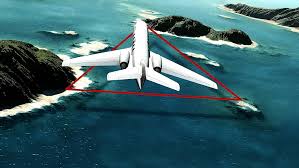Ports of Pakistan: Strategic Gateways to Trade and Economic Development

Pakistan, strategically located at the crossroads of South Asia, Central Asia, and the Middle East, boasts a long coastline along the Arabian Sea. This 1,046-kilometer coastline is home to several seaports that are not only vital for the nation’s economy but also crucial for regional and international trade. The ports of Pakistan serve as key logistics hubs, facilitating import and export activities and connecting Pakistan with the global maritime trade network. In this blog, we will explore the major ports of Pakistan, their importance, infrastructure, and their role in the country’s economic development.
1. Karachi Port – The Lifeline of Pakistan’s Economy
Location: Karachi, Sindh
Established: 1887
Administered by: Karachi Port Trust (KPT)
Karachi Port is the oldest and busiest port in Pakistan. Located on the Arabian Sea, this port handles around 60% of the nation’s cargo, making it a central pillar of Pakistan’s trade infrastructure. It consists of two main sections: the West Wharf and East Wharf, comprising over 30 berths.
The port is equipped to handle a variety of cargo, including containers, oil, bulk cargo, and general merchandise. Due to its strategic location, the port is essential not just for trade but also for supporting Pakistan’s industrial base, which relies heavily on imports of raw materials and exports of manufactured goods.
Key Features:
-
Deep draft berths capable of handling large vessels
-
Modern container terminals (PICT and KICT)
-
Dedicated oil piers for petroleum handling
-
Bulk and break-bulk cargo terminals
2. Port Qasim – Industrial and Commercial Hub
Location: 35 km southeast of Karachi
Established: 1973
Administered by: Port Qasim Authority (PQA)
Port Qasim is the second busiest port in Pakistan and handles approximately 35% of the country’s maritime trade. It was built to reduce the load on Karachi Port and to support the growing industrial needs of the country. The port is home to several specialized terminals such as the Fauji Oil Terminal and Marketing Company (FOTCO), Engro Vopak Terminal, and the Qasim International Container Terminal (QICT).
What sets Port Qasim apart is its proximity to the Pakistan Steel Mills and the Bin Qasim Industrial Zone. This makes it a preferred choice for industries dealing with heavy machinery, chemicals, and bulk raw materials.
Key Features:
-
Handles both dry and liquid cargo
-
Home to oil, LNG, and chemical terminals
-
Accessibility through road and railway networks
-
Environmental-friendly operations
3. Gwadar Port – The Gateway to the Future
Location: Gwadar, Balochistan
Operational Since: 2007
Developed by: China under CPEC
Administered by: Gwadar Port Authority
Gwadar Port is perhaps the most strategically important seaport in Pakistan due to its location near the Strait of Hormuz, through which a significant portion of the world’s oil passes. Developed with Chinese assistance under the China-Pakistan Economic Corridor (CPEC), the port is envisioned to be a major transshipment hub for Central Asia, Afghanistan, and western China.
Currently, Gwadar is in the early stages of its development, but it has immense potential. It includes plans for an international airport, special economic zones (SEZs), and state-of-the-art cargo handling facilities. Once fully operational, Gwadar could significantly alter the economic landscape of Pakistan and the broader region.
Key Features:
-
Deep-sea port with natural depth
-
Central to CPEC and Belt and Road Initiative
-
Potential to handle over 300 million tons of cargo annually
-
Plans for Gwadar Free Zone to attract foreign investment
4. Ormara Port – A Strategic Naval Base
Location: Ormara, Balochistan
Ormara is a smaller port town that primarily serves as a naval base for the Pakistan Navy. Although it is not currently a major commercial port, its strategic importance cannot be overstated. The government has shown interest in developing it further to serve both military and limited commercial purposes in the future.
Ormara provides an alternative point for maritime security operations and logistics. It lies between Karachi and Gwadar, making it a potential candidate for future development under national maritime expansion plans.
5. Pasni Port – Potential for Regional Connectivity
Location: Pasni, Balochistan
Pasni is another small port located along the Makran Coast. It is currently used mainly for fishing and small-scale commercial operations. However, it is being eyed for development as part of regional connectivity initiatives and has the potential to support coastal trade and logistics in the future.
The government is also considering upgrades to its infrastructure to handle more cargo and fishing operations, which could boost the local economy of Balochistan.
Importance of Ports in Pakistan’s Economic Landscape
Pakistan’s ports play a pivotal role in national development. Here are some of the key contributions:
-
Trade Facilitation: Around 95% of Pakistan’s international trade is conducted through seaports.
-
Revenue Generation: Ports contribute significantly to government revenue through taxes, duties, and fees.
-
Employment Opportunities: Thousands of direct and indirect jobs are created in port cities and related logistics industries.
-
Foreign Investment: Ports like Gwadar are attracting substantial foreign investment, especially under CPEC.
-
Connectivity: Ports enhance connectivity for landlocked countries like Afghanistan and Central Asian states.
Challenges and the Way Forward
Despite their importance, Pakistan’s ports face several challenges:
-
Infrastructure Gaps: Many ports lack the modern infrastructure needed to handle large cargo volumes.
-
Security Concerns: Especially in Balochistan, geopolitical instability poses risks to long-term investment.
-
Bureaucratic Hurdles: Inefficiencies in port management and customs procedures affect operational performance.
-
Environmental Issues: Oil spills, water pollution, and habitat destruction are concerns for coastal ecosystems.
To address these issues, Pakistan must:
-
Invest in modernizing port infrastructure
-
Strengthen maritime laws and governance
-
Promote public-private partnerships
-
Focus on eco-friendly port development
-
Improve port connectivity through better roads and rail links
Conclusion
The ports of Pakistan are more than just points of maritime access—they are engines of economic growth, regional integration, and global trade. As Pakistan continues to position itself as a regional trade hub, particularly through initiatives like CPEC, the development and modernization of its ports become even more crucial. With strategic planning, investment, and governance, Pakistan’s ports can play a transformative role in the country’s future, making it a vital player in the global maritime economy.






Leave a Comment